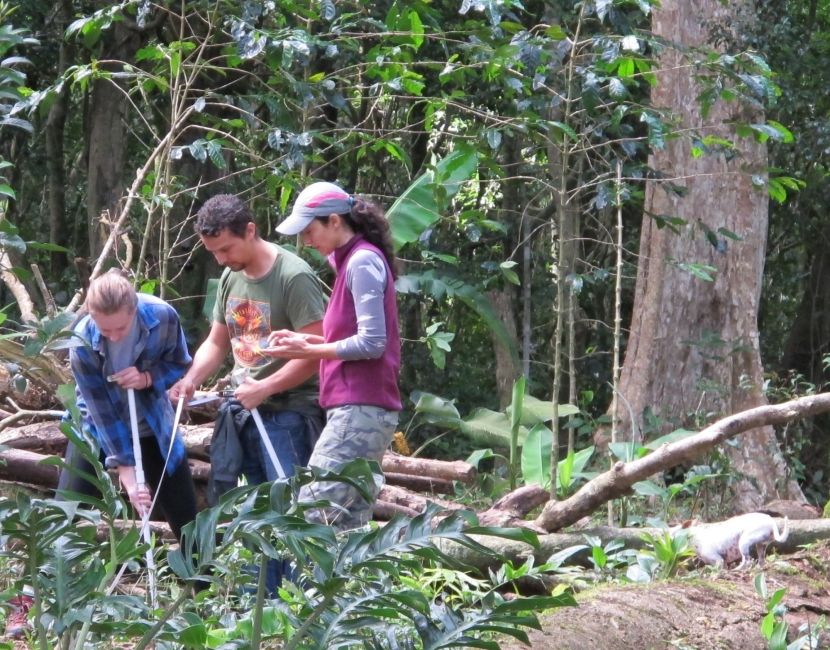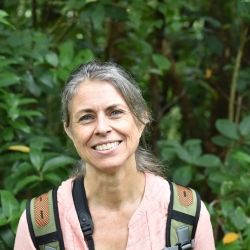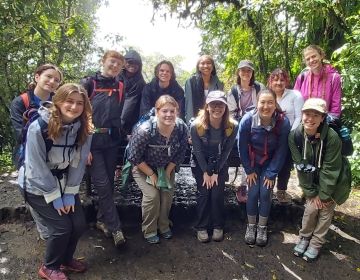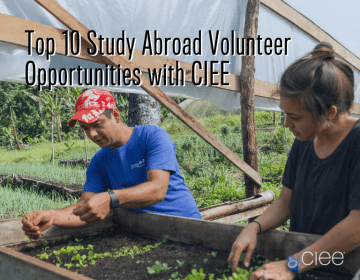MOVING MONTEVERDE TOWARD CARBON NEUTRALITY, BY CATIE STRICKLAND (MEREDITH COLLEGE): SUSTAINABILITY AND THE ENVIRONMENT INTERNSHIP
For the past month I have been working with CORCLIMA on their carbon sinks inventory. CORCLIMA, also known as The Monteverde Commission for Resilience to Climate Change, is a network of leaders that encourages broad public participation, with representatives from public institutions, private organizations and community members. Their goals are to align and unite efforts in the Monteverde region to reduce carbon emissions, increase carbon sequestration, and adapt to climate change. The ultimate goal is to make Monteverde the first carbon negative region in the country.
Carbon negativity occurs when the amount of carbon absorbed through the forests is more than the amount that is emitted from the region. CORCLIMA has already been working on the emissions inventory and my work was based on starting with the carbon sink inventory. The were several main goals that I needed to accomplish, but the most important one was coming up with the questions that would be in the interview. This was very important because before starting to make tree plots that will calculate the amount of carbon captured, we have to interview the landowners to gather general information about their property, which will later be determined by CORCLIMA as to whether or not it is an appropriate property to put one of the plots. After making the interview, I was able to visit six properties and interview the landowners. Through this I was able to see the effectiveness of the questions and clear up any issues that were found.
Many landowners had questions about the plots that might be put on their property, so I was thankfully able to make one of the plots myself on my professor’s property, plotting the coordinates of all the trees and measuring their diameters. This was an extremely valuable experience that I could look back on and explain the process to the landowners that I interviewed. During the interview process it was made clear that the landowners would like to receive some sort of recognition for participating in the project and with this new information I made a template for a certificate of participation that will be awarded to the participating landowners once the plots are established. At the end of the internship I provided CORCLIMA with the interview, six completed interview with landowners, summaries of each interview, a certificate of participation, and a draft email to be sent to landowners before visiting them. The tree plot that I made was more of an exercise for me to see how it will be done and so I could explain the sizing etc to the landowners.
I feel like my greatest contribution was making the interview, because it is a tool that CORCLIMA will continue to use throughout their work on the carbon sink inventory. For me personally, I found it very valuable to learn how to make an interview, making sure all questions are relevant to the purpose and that they are clear so that people understand them. I chose to work with CORCLIMA in this project because I am very passionate about climate change and educating the public the issue. I had never previously worked on anything like this, so everything that I produced for CORCLIMA was something new that I learned throughout my time working in the internship.
Catie Strickland learns from Hector Castaneda and Marcela Morales about the techniques used to quantify carbon emissionsRelated Posts
Happy Earth Day: Today and Every Day
Happy Earth Day! Every April 22, this global event comes around to remind us how precious our planet is, what sustainable efforts we can make to protect Earth, and that... keep reading
Top 10 Study Abroad Volunteer Opportunities with CIEE
Have you ever wondered if you could volunteer abroad? Perhaps you're looking into study abroad programs that provide international volunteer opportunities. If you’re itching to study abroad and truly make... keep reading
Recycling Internship with ADI San Luis
Written by Maya Peske (Cornell College), Internship in Sustainability and the Environment The road from San Luis up to Monteverde is well known by all of the people in the... keep reading




